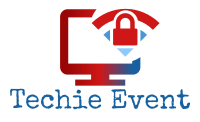Artificial Intelligence (AI) is transforming virtually every industry, from healthcare and finance to transportation and education. Alongside its immense potential lies the risk of unintended consequences, ranging from ethical dilemmas to security threats. To manage these risks effectively, organizations and governments are increasingly turning to AI governance frameworks that focus on risk identification, monitoring, and mitigation. At the heart of these frameworks are three essential components: the AI Risk Register, regular AI Reviews, and concrete Actions driven by insights and outcomes.
What is AI Governance?
AI Governance refers to the structures, policies, and practices that ensure responsible development and deployment of AI technologies. It encompasses ethical considerations, regulatory compliance, data privacy, transparency, and accountability. While it’s easy to get lost in the theoretical aspects, practical tools like a risk register, review protocols, and action plans bring governance from the whiteboard to the boardroom.
The AI Risk Register: A Living Document
A critical element of AI governance is the AI Risk Register. This document captures potential risks associated with an AI system and serves as a centralized repository of concerns that must be addressed over the system’s lifecycle. It allows teams to proactively manage uncertainties, rather than react to emergencies.
Key elements included in an AI Risk Register:
- Risk Description: A clear summary of potential or observed risks.
- Impact Assessment: Evaluation of how severely the risk could affect business, customers, or society.
- Likelihood: The probability of the risk occurring.
- Ownership: The individual or team responsible for managing the risk.
- Mitigation Strategies: Proposed actions to reduce the likelihood or impact of the risk.
- Review Status: Ongoing updates and notes on the current status of the risk.
The AI Risk Register should be a dynamic tool—updated regularly and accessible to interdisciplinary teams including technologists, legal experts, ethicists, and business stakeholders.

Common AI Risks to Track
The complexity of AI systems can give rise to a wide variety of risks. Some of the common ones include:
- Bias and Discrimination: Algorithms trained on historical data may unintentionally carry forward human biases.
- Lack of Transparency: “Black box” models make it difficult to understand why certain decisions are made.
- Adversarial Attacks: Threat actors might manipulate inputs to cause AI systems to behave unpredictably.
- Privacy Breaches: Improper handling of personal data used in training models can lead to major violations.
- Automation Fatigue: Employees or users may feel overwhelmed by constant algorithmic decision-making.
By continuously monitoring these risks, organizations can ensure AI is used safely and ethically.
Review Mechanisms in AI Governance
Having a risk register is only part of the journey. Regular AI Reviews are essential to determine whether mitigation strategies are effective, whether new risks have emerged, and whether the technology itself has evolved in ways that require governance updates.
Three types of reviews are typically conducted:
- Technical Reviews: These focus on model performance, accuracy, robustness, and compliance with design specs.
- Ethical Reviews: Ethicists and subject matter experts assess the fairness and societal implications of the AI system.
- Business Reviews: Consider the alignment of the AI solution with the organization’s strategic priorities and compliance needs.
Reviews should not simply be procedural. They should be welcomed as a key part of building trust with users and stakeholders. Furthermore, they often take place at different stages:
- Pre-deployment: Ensuring readiness and risk mitigation before the AI system goes live.
- Post-deployment: Monitoring real-world performance and unintended consequences.
- Periodic Reassessment: Especially important for adaptive systems that evolve over time.
Committee oversight and transparency in documentation can enhance these reviews significantly, providing assurance both internally and externally.
From Insight to Action
Identifying risks and reviewing them on a regular basis won’t suffice unless they lead to corrective or preventive actions. These responses can vary depending on the type and severity of a risk.

Examples of Actions Based on Risk Reviews Include:
- Retraining AI models with more diverse data to reduce bias
- Implementing explainability tools for greater transparency
- Adding additional oversight or approval workflows in sensitive decision-making areas
- Suspending or modifying systems that consistently underperform or misbehave
- Communicating risks and mitigations clearly to stakeholders and end-users
Just like in project management, a full cycle of observation-diagnosis-action-feedback is essential. This ensures that the governance isn’t just a policy on paper, but an operational reality that shapes development and implementation processes.
Best Practices for Implementing Risk Registers and Reviews
To make the most of AI governance structures, consider these best practices:
- Cross-functional Involvement: Don’t leave risk identification to just the tech team. Include diverse perspectives.
- Version Control: Maintain detailed logs with timestamps for all edits to the Risk Register and review documents.
- Open Communication: Create a culture where flagging risks is encouraged, not penalized.
- Use Automation Holistically: Leverage AI tools for tracking compliance, but pair them with human judgment.
- Regular Training: Ensure teams are updated on evolving risks, ethical frameworks, and regulatory requirements.
Bridging the Gap Between Innovation and Responsibility
As AI continues to evolve and permeate more aspects of our daily lives, balancing innovation with accountability becomes critical. Governance structures such as risk registers, systematic reviews, and targeted actions not only safeguard organizations from potential harms but also build public trust—essential for long-term adoption and impact.
The maturity of an organization’s AI governance processes is often a signal of how seriously it takes its ethical and social responsibilities. It turns the abstract concept of “responsible AI” into a disciplined, structured, and adaptive framework that evolves as the technology does.
By embedding these practices into project lifecycles, from prototyping to productization, stakeholders can ensure that AI serves human values rather than undermines them. After all, the goal is not only to build smart machines but to do so intelligently.
Conclusion
AI governance is no longer optional—it is a cornerstone of modern technology risk management. With the right tools in place—a comprehensive AI Risk Register, robust Review protocols, and determined Action follow-through—organizations can navigate the complex terrain of AI innovation responsibly and effectively.
As regulations become stricter and public scrutiny intensifies, the ability to demonstrate proactive governance will be a deciding factor in the success or failure of AI initiatives. The path forward is clear: equip teams with governance mechanisms, foster a culture of accountability, and keep the focus on ethical, sustainable AI deployment.
